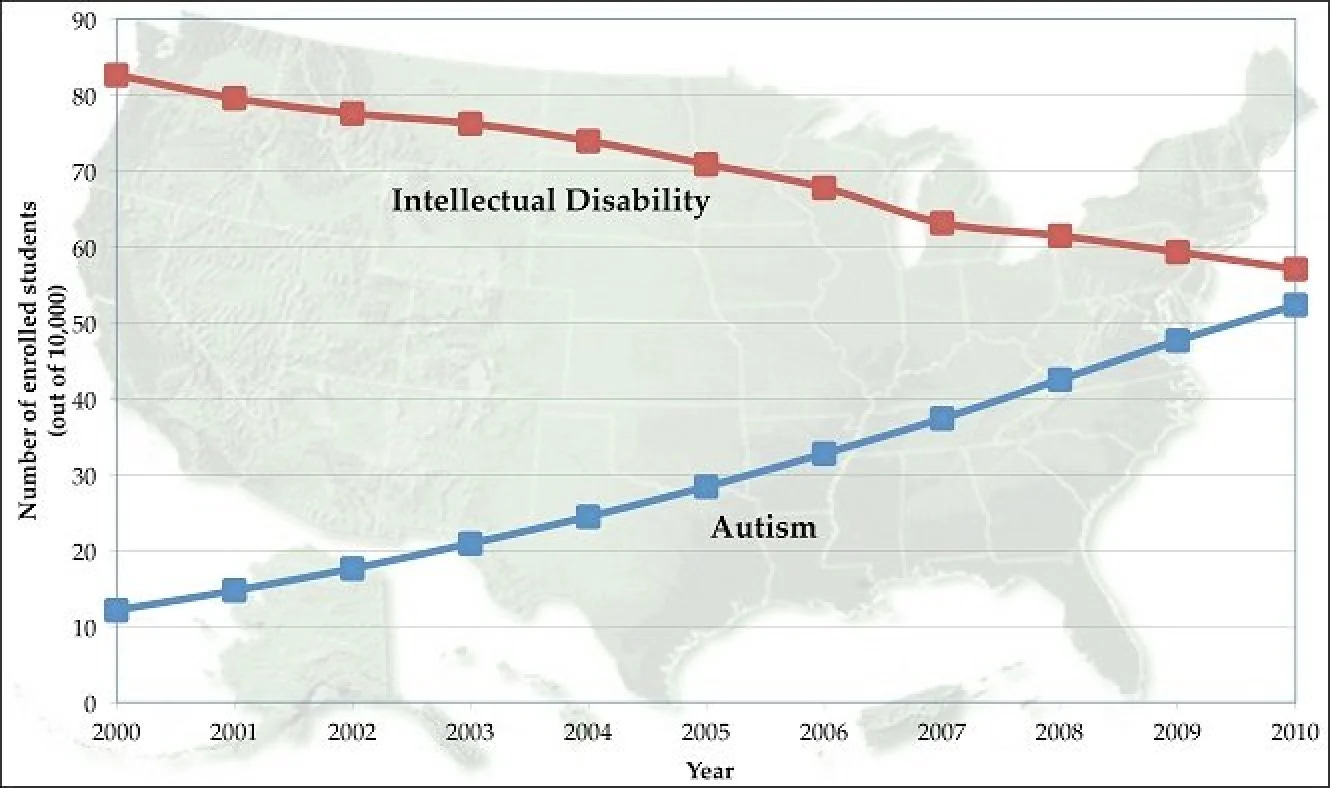Why is autism so common now?
Seven big, bold reasons for why it feels like autism is everywhere these days

Is autism really exploding? It can feel that way—diagnoses have skyrocketed, social media brims with self-disclosures, and headlines warn of an autism epidemic. But the reality is that we’re getting better at seeing what’s always been here.
Continue reading for seven evidence-backed reasons why it feels like autism is everywhere.
When I was diagnosed with autism at 39 and told one of my oldest friends, she was underwhelmed. Why? She felt like autism was everywhere. The latest trend. Another one of her friends had recently shared that she suspected she was autistic, too.
It’s strange to feel like my neurodivergence is part of a trend, and my friend’s reaction has been at the back of my mind ever since.
If you haven’t read my article on the genetic bases of autism, now’s the time — it provides a solid foundation of the two genetic pathways of autism.
After my diagnosis, I made it my mission to learn everything I can about autism. I’ve come to understand why it feels like autism is on the rise. Because diagnosis is more prevalent these days. Not because autism itself has increased, but because we’re seeing it more clearly.
Here are seven research-backed reasons why it feels like autism is more common. While I’ve sourced data from the United States, similar trends are happening worldwide.
1: Autism has expanded beyond kids to include adults
It’s not that people today are different. It’s that the definition of autism has expanded to include more people.
When Leo Kanner published his first systematic description of autism in 1943, it was limited to children. He had glimpsed something real, but he was standing on the deck of a ship seeing only the tip of the iceberg.
Since then, research has revealed that autism extends deeper into human populations and is linked to a broader array of traits.
Most impactfully, autism is not just a childhood condition. Between 2011 and 2022, diagnoses among US adults aged 26-34 increased 450%. (Source: Harvard Medical School).
2: Diagnostic substitution reclassifies older labels
Many people diagnosed with autism today would have received diagnoses in the past—but for different conditions, such as intellectual disability (ID) or personality disorders. While you can have autism and ID or a personality disorder, in some cases these were misdiagnosed, and the reversal of that trend is called diagnostic substitution. (Source: Penn State University via Education Week).
As autism understanding evolved, many people who in years past would have been diagnosed as something else are now being diagnosed with autism.
Want proof?
Check out the diverging trendlines for autism versus ID diagnosis from 2000-2010:

3: Reduced gender bias reveals more women & non-binary people
For years, autism screening tools were based on male presentations and resulted in a 4:1 male-to-female diagnosis ratio. That meant non-male cases were being missed. Today, that gap is narrowing.
When screening tools in research settings are adjusted for gender bias, the male-to-female ratio approaches 1:1. (Source: University of Minnesota).
4: Improved detection in minority communities
Historically, minority children have been under-diagnosed relative to their white peers for a number of reasons. That disparity is starting to improve.
Between 2011 and 2022, the CDC reports that autism diagnosis increased at higher rates for minority children (defined as Black, Asian, American Indian or Alaska Native, and Hispanic children) compared with white children. This doesn’t mean the absolute numbers were higher, but it means the gap is beginning to close. (Source: JAMA Network).
The same trend was not seen for adults during the same period, however. A large disparity still exists for adults, suggesting that a large number of minority adults are under diagnosed.
5: Universal pediatric screening catches more cases, earlier
The American Academy of Pediatrics first recommended universal autism screening for children in 2007, and that recommendation is slowly being adopted. When you look for something more often, you find it more often. Not because it’s spreading, but because we’re paying better attention.
A recent randomized trial showed that pediatric offices with universal screening found more instances of autism and at younger ages than those offices without it. (Source: Drexel University).
6: Practical incentives drive more assessments
As more programs are created to support autistic people, there’s more reason to go through the trouble of getting a diagnosis. Studies have found that autism diagnoses tend to cluster in geographic regions where there’s available community support.
This makes sense, as in the US there’s a cost to getting a diagnosis, both in terms of out-of-pocket expense (free assessments are hard to access) and the time and disruption to already difficult daily lives. (Source: Academic Pedatrics journal).
7: Lower stigma encourages exploration
Many parents and adults were once reluctant to pursue diagnosis for fear of judgment or discrimination. That trend has reversed as increased openness and acceptance of neurodiversity has made it feel safer to seek answers without fear of ostracism.
While the situation is improving, stigma still remains a significant issue for autistic people. (Source: Frontiers in Psychiatry).
Did you enjoy this post? Ways to support my work—for free!
1. Subscribe for regular updates and 2. Tap below to heart this post so others discover it.
Looking for more to read? Check out these past posts:
Stay curious,
Laura


Well done answering such a seemingly massive question in such a sharp and concise way!
I am 60 y/o, in 1981 my DX was Atypical Disorder - other with an emotional handicap, I was verbal, literate and my abstract thought and reasoning were found to be significantly above average, I was also EXTREMELY situationally reactive BUT the DSM II ..........